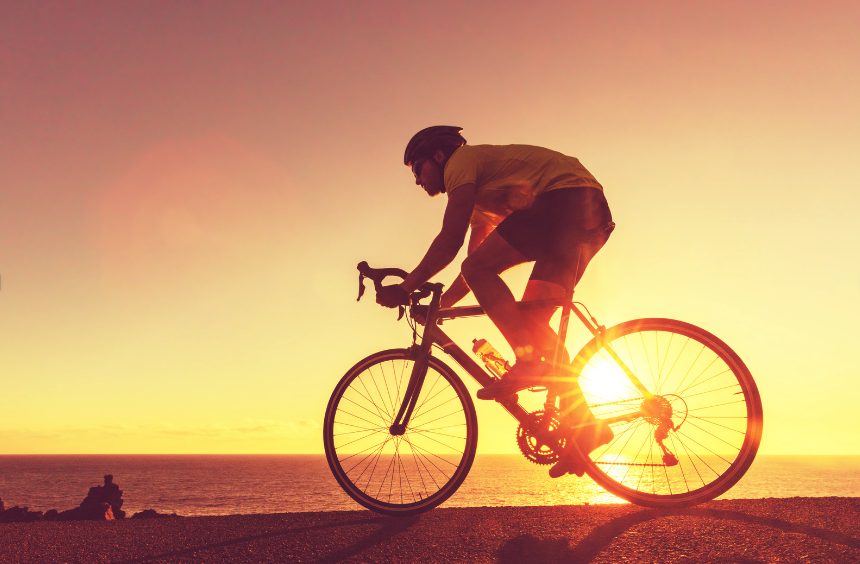The Benefits and Pitfalls of a Long and Slow Bike Ride for Building Base Fitness

Riding a bike is a great way to stay in shape, but for those who are looking to build their base fitness, a long and slow bike ride is the perfect solution. This type of ride is designed to help improve cardiovascular endurance and overall fitness, making you faster and fitter in the process.
One of the main benefits of a long and slow bike ride is that it helps to improve your cardiovascular fitness. This type of ride is typically done at a lower intensity, which allows your body to focus on building endurance. By riding for longer periods of time at a lower intensity, your heart and lungs will become stronger, which will help to improve your overall cardiovascular fitness.
Another benefit of a long and slow bike ride is that it helps to improve your overall fitness. This type of ride is often done at a steady pace, which allows your body to work at a consistent level. This steady pace allows your body to adapt to the demands of the ride, which will help to improve your overall fitness.
When it comes to how to do a long and slow bike ride, it is important to start out slow and gradually build up your intensity and duration. This will help to prevent injury and allow your body to adapt to the demands of the ride. It is also important to maintain a steady pace throughout the ride, as this will help to improve your overall fitness.
The ideal RPM (revolutions per minute) for a long and slow bike ride is typically between 60-80 RPM. This is a good range to maintain for building endurance, as it allows your body to work at a steady pace without putting too much stress on your joints. The ideal time on the saddle for a long and slow bike ride is typically between 1-2 hours.
In addition to maintaining a steady pace and RPM, it is also important to consider your heart rate zones when training for a long and slow bike ride. The five heart rate zones that are typically used for cycling are:
- Active recovery (50-60% of max heart rate)
- Endurance (60-70% of max heart rate)
- Tempo (70-80% of max heart rate)
- Lactate threshold (80-90% of max heart rate)
- Max effort (90-100% of max heart rate)
When training for a long and slow bike ride, it is best to focus on the endurance and active recovery zones. These zones will help to build your cardiovascular endurance and overall fitness. It is also important to monitor your heart rate throughout the ride to ensure that you are working within your desired heart rate zone.
It is important to remember that when it comes to bike training, going too fast, too soon can be detrimental to your progress. When you push yourself too hard, too quickly, you risk overtraining, injury and burnout. This can lead to a decrease in performance, and in some cases, cause you to take a break from training altogether.
One of the main issues with going too fast, too soon is that it can lead to overtraining. Overtraining occurs when your body is put under too much stress, and it is unable to recover properly. This can lead to fatigue, muscle soreness, and a decrease in performance. If you continue to push yourself too hard, too quickly, your body may eventually break down, and you may be forced to take a break from training.
Another issue with going too fast, too soon is that it can increase the risk of injury. When you push yourself too hard, too quickly, your body may not be able to handle the added stress. This can lead to muscle strains, ligament tears, and even bone fractures. It is important to remember that your body needs time to adapt to the demands of your training, so it’s essential to start slowly and gradually increase your intensity and duration.
Finally, going too fast, too soon can lead to burnout. Burnout is a state of emotional, physical, and mental exhaustion caused by excessive and prolonged stress. When you push yourself too hard, too quickly, you may find yourself mentally and physically exhausted, and unable to continue training. This can lead to a loss of motivation and a decrease in performance.
A long and slow bike ride is a great way to build base fitness and improve cardiovascular endurance. By riding for longer periods of time at a lower intensity, your heart and lungs will become stronger, which will help to improve your overall cardiovascular fitness. Additionally, by maintaining a steady pace and RPM, and monitoring your heart rate zones, you can ensure that your training is effective and efficient. So, next time you hit the road, consider a long and slow ride to improve your fitness levels.
In conclusion, when it comes to bike training, it is important to start slow and gradually increase your intensity and duration. This will help to prevent overtraining, injury and burnout. Additionally, it’s essential to monitor your body’s response to your training and listen to your body when it’s telling you to slow down or take a break. This will help to ensure that you are training effectively and efficiently, and reaching your goals in a sustainable manner.










